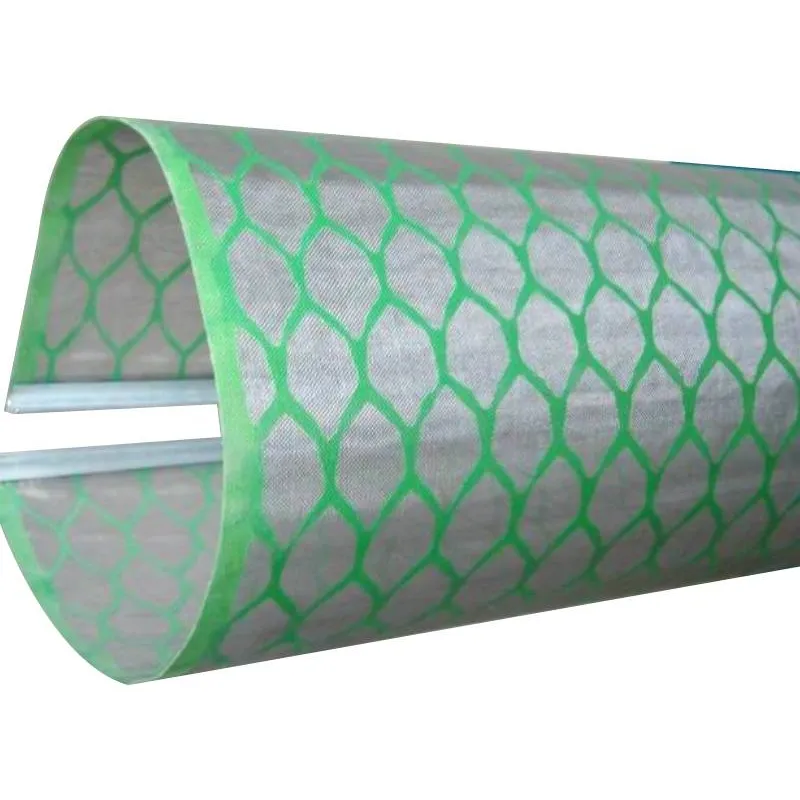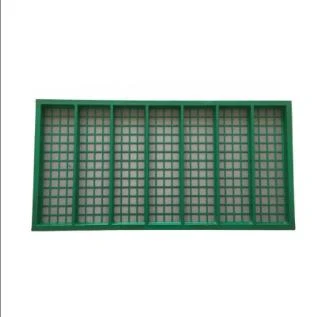- Industrial zone, South of Anping Town, Hengshui, Hebei, China.
- sales@hfpetromesh.com
- +86-18931809706
 Afrikaans
Afrikaans  Albanian
Albanian  Amharic
Amharic  Arabic
Arabic  Armenian
Armenian  Azerbaijani
Azerbaijani  Basque
Basque  Belarusian
Belarusian  Bengali
Bengali  Bosnian
Bosnian  Bulgarian
Bulgarian  Catalan
Catalan  Cebuano
Cebuano  Corsican
Corsican  Croatian
Croatian  Czech
Czech  Danish
Danish  Dutch
Dutch  English
English  Esperanto
Esperanto  Estonian
Estonian  Finnish
Finnish  French
French  Frisian
Frisian  Galician
Galician  Georgian
Georgian  German
German  Greek
Greek  Gujarati
Gujarati  Haitian Creole
Haitian Creole  hausa
hausa  hawaiian
hawaiian  Hebrew
Hebrew  Hindi
Hindi  Miao
Miao  Hungarian
Hungarian  Icelandic
Icelandic  igbo
igbo  Indonesian
Indonesian  irish
irish  Italian
Italian  Japanese
Japanese  Javanese
Javanese  Kannada
Kannada  kazakh
kazakh  Khmer
Khmer  Rwandese
Rwandese  Korean
Korean  Kurdish
Kurdish  Kyrgyz
Kyrgyz  Lao
Lao  Latin
Latin  Latvian
Latvian  Lithuanian
Lithuanian  Luxembourgish
Luxembourgish  Macedonian
Macedonian  Malgashi
Malgashi  Malay
Malay  Malayalam
Malayalam  Maltese
Maltese  Maori
Maori  Marathi
Marathi  Mongolian
Mongolian  Myanmar
Myanmar  Nepali
Nepali  Norwegian
Norwegian  Norwegian
Norwegian  Occitan
Occitan  Pashto
Pashto  Persian
Persian  Polish
Polish  Portuguese
Portuguese  Punjabi
Punjabi  Romanian
Romanian  Russian
Russian  Samoan
Samoan  Scottish Gaelic
Scottish Gaelic  Serbian
Serbian  Sesotho
Sesotho  Shona
Shona  Sindhi
Sindhi  Sinhala
Sinhala  Slovak
Slovak  Slovenian
Slovenian  Somali
Somali  Spanish
Spanish  Sundanese
Sundanese  Swahili
Swahili  Swedish
Swedish  Tagalog
Tagalog  Tajik
Tajik  Tamil
Tamil  Tatar
Tatar  Telugu
Telugu  Thai
Thai  Turkish
Turkish  Turkmen
Turkmen  Ukrainian
Ukrainian  Urdu
Urdu  Uighur
Uighur  Uzbek
Uzbek  Vietnamese
Vietnamese  Welsh
Welsh  Bantu
Bantu  Yiddish
Yiddish  Yoruba
Yoruba  Zulu
Zulu
- Afrikaans
- Albanian
- Amharic
- Arabic
- Armenian
- Azerbaijani
- Basque
- Belarusian
- Bengali
- Bosnian
- Bulgarian
- Catalan
- Cebuano
- Corsican
- Croatian
- Czech
- Danish
- Dutch
- English
- Esperanto
- Estonian
- Finnish
- French
- Frisian
- Galician
- Georgian
- German
- Greek
- Gujarati
- Haitian Creole
- hausa
- hawaiian
- Hebrew
- Hindi
- Miao
- Hungarian
- Icelandic
- igbo
- Indonesian
- irish
- Italian
- Japanese
- Javanese
- Kannada
- kazakh
- Khmer
- Rwandese
- Korean
- Kurdish
- Kyrgyz
- Lao
- Latin
- Latvian
- Lithuanian
- Luxembourgish
- Macedonian
- Malgashi
- Malay
- Malayalam
- Maltese
- Maori
- Marathi
- Mongolian
- Myanmar
- Nepali
- Norwegian
- Norwegian
- Occitan
- Pashto
- Persian
- Polish
- Portuguese
- Punjabi
- Romanian
- Russian
- Samoan
- Scottish Gaelic
- Serbian
- Sesotho
- Shona
- Sindhi
- Sinhala
- Slovak
- Slovenian
- Somali
- Spanish
- Sundanese
- Swahili
- Swedish
- Tagalog
- Tajik
- Tamil
- Tatar
- Telugu
- Thai
- Turkish
- Turkmen
- Ukrainian
- Urdu
- Uighur
- Uzbek
- Vietnamese
- Welsh
- Bantu
- Yiddish
- Yoruba
- Zulu
កុម្ភៈ . 17, 2025 21:54
Back to list
perimeter safety net
Landing safety nets have emerged as a critical innovation in modern aviation and aerospace engineering. Their integration into the safety protocols of various landing procedures signifies a landmark advancement in enhancing the safety and reliability of landing operations, thereby setting new standards in the industry.
Another aspect demonstrating the expertise embedded in the development of landing safety nets is the interdisciplinary approach adopted by engineers and researchers. Collaboration among engineers, material scientists, and safety analysts ensures continuous improvements in the effectiveness of safety nets. Research and development initiatives focus on enhancing the material properties, deployment mechanisms, and impact absorption capabilities of these systems. Moreover, the trustworthiness of landing safety nets is fortified by thorough certification processes and compliance with international safety standards. Organizations and manufacturers partake in extensive documentation and validation procedures, ensuring that every system aligns with global safety norms. This meticulous attention to quality control and regulatory compliance fosters trust among stakeholders, including passengers, crew members, and industry partners. In the context of product applications, companies are constantly evolving these systems to adapt to diverse aircraft and mission parameters. Customized solutions tailored to specific requirements enhance the operational versatility of landing safety nets. Today's aerospace industry demands products that are not only effective but adaptable to the unique challenges posed by different environments, whether it be on Earth or other planets. Investment in research and development serves as a testament to the industry's commitment to advancing landing safety net technologies. The ongoing pursuit of excellence and innovation ensures that these systems remain at the forefront of landing safety solutions. With continued advancements, the aerospace sector is poised to see further enhancements in safety and efficiency, paving the way for safer, more reliable flights and missions. In conclusion, landing safety nets represent a cornerstone of modern aviation and aerospace safety solutions. With their foundation in experience, expertise, authoritativeness, and trustworthiness, these systems continue to safeguard the landing phase of flight, ensuring that both pilot and passengers can rely on an additional layer of security. As the industry advances, the role of landing safety nets is only set to expand, offering enhanced protection and confidence in flight operations worldwide.


Another aspect demonstrating the expertise embedded in the development of landing safety nets is the interdisciplinary approach adopted by engineers and researchers. Collaboration among engineers, material scientists, and safety analysts ensures continuous improvements in the effectiveness of safety nets. Research and development initiatives focus on enhancing the material properties, deployment mechanisms, and impact absorption capabilities of these systems. Moreover, the trustworthiness of landing safety nets is fortified by thorough certification processes and compliance with international safety standards. Organizations and manufacturers partake in extensive documentation and validation procedures, ensuring that every system aligns with global safety norms. This meticulous attention to quality control and regulatory compliance fosters trust among stakeholders, including passengers, crew members, and industry partners. In the context of product applications, companies are constantly evolving these systems to adapt to diverse aircraft and mission parameters. Customized solutions tailored to specific requirements enhance the operational versatility of landing safety nets. Today's aerospace industry demands products that are not only effective but adaptable to the unique challenges posed by different environments, whether it be on Earth or other planets. Investment in research and development serves as a testament to the industry's commitment to advancing landing safety net technologies. The ongoing pursuit of excellence and innovation ensures that these systems remain at the forefront of landing safety solutions. With continued advancements, the aerospace sector is poised to see further enhancements in safety and efficiency, paving the way for safer, more reliable flights and missions. In conclusion, landing safety nets represent a cornerstone of modern aviation and aerospace safety solutions. With their foundation in experience, expertise, authoritativeness, and trustworthiness, these systems continue to safeguard the landing phase of flight, ensuring that both pilot and passengers can rely on an additional layer of security. As the industry advances, the role of landing safety nets is only set to expand, offering enhanced protection and confidence in flight operations worldwide.
Share
Next:
Latest news
-
Why Our Shaker Screen for Sale Stands Out in Every ApplicationNewsAug.08,2025
-
Unmatched Efficiency with Premium Shale Shaker Screen TechnologyNewsAug.08,2025
-
Reliable, Durable, and Cost-Effective: Press Locked Steel Grating SolutionsNewsAug.08,2025
-
Precision Strength with Welded Steel Bar GratingNewsAug.08,2025
-
Perimeter Safety Netting: The High-Strength Shield for Elevated Safety SolutionsNewsAug.08,2025
-
Maximize Performance with Steel Walkway GratingNewsAug.08,2025